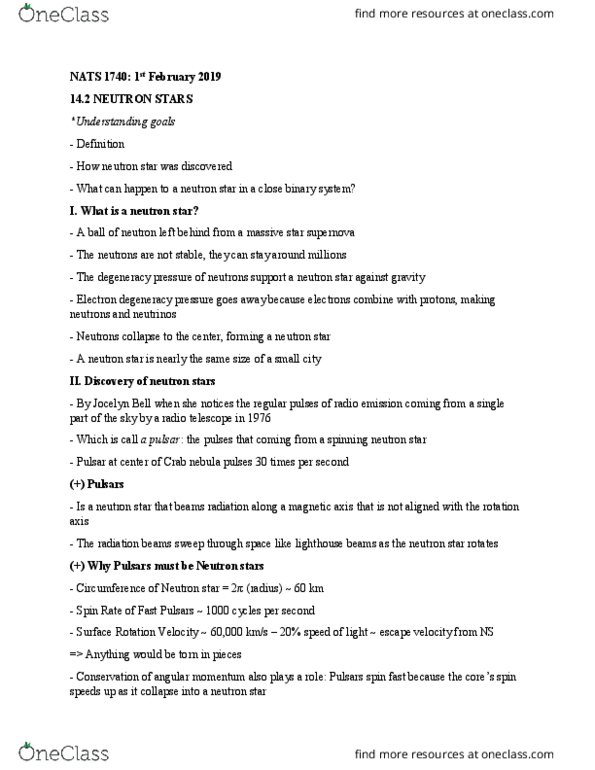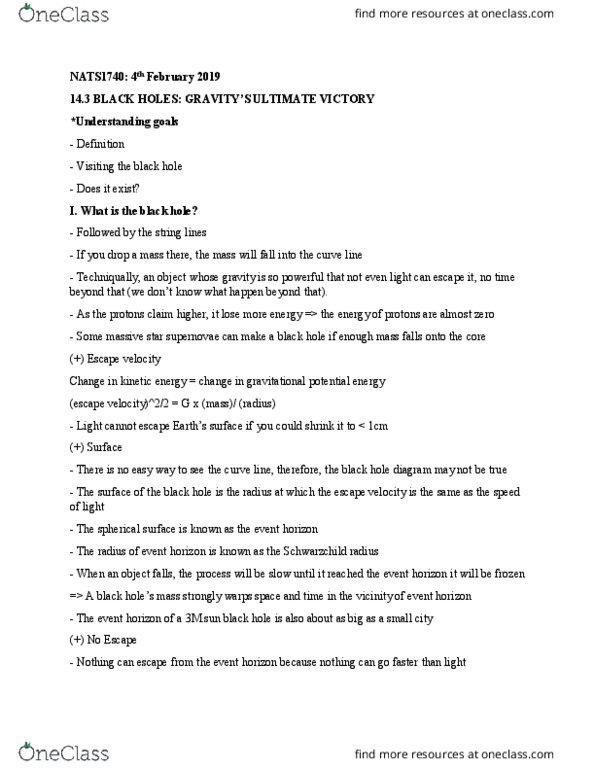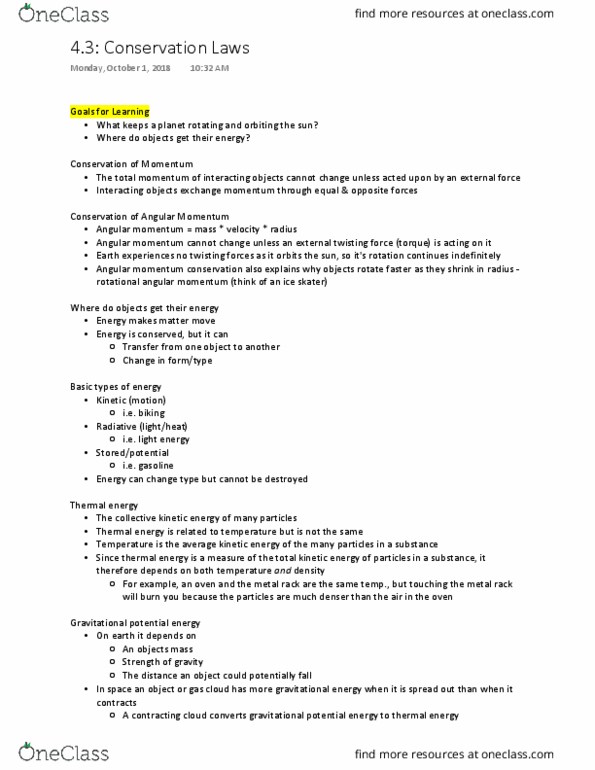NATS 1740 Lecture 14: 4th February 2019
NATS 1740 verified notes
14/37View all
Document Summary
If you drop a mass there, the mass will fall into the curve line. Techniqually, an object whose gravity is so powerful that not even light can escape it, no time beyond that (we don"t know what happen beyond that). As the protons claim higher, it lose more energy => the energy of protons are almost zero. Some massive star supernovae can make a black hole if enough mass falls onto the core (+) escape velocity. Change in kinetic energy = change in gravitational potential energy (escape velocity)^2/2 = g x (mass)/ (radius) Light cannot escape earth"s surface if you could shrink it to < 1cm (+) surface. There is no easy way to see the curve line, therefore, the black hole diagram may not be true. The surface of the black hole is the radius at which the escape velocity is the same as the speed of light. The spherical surface is known as the event horizon.




